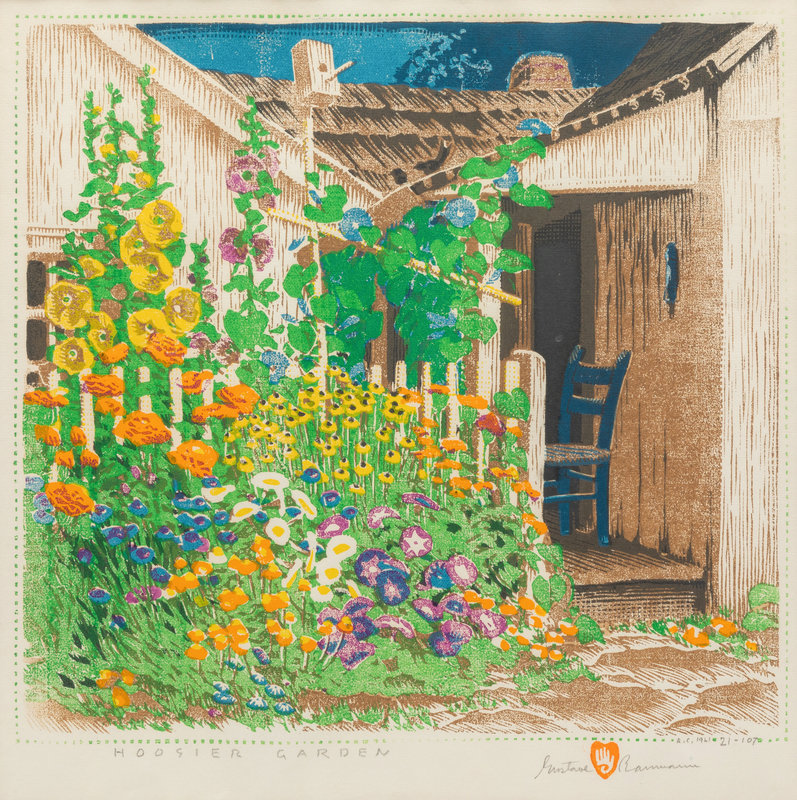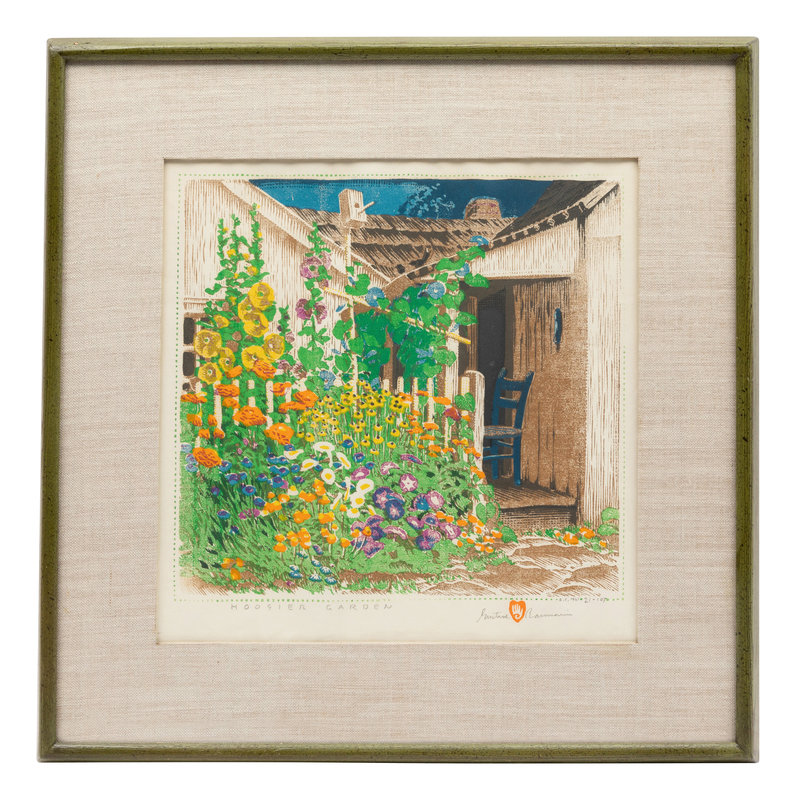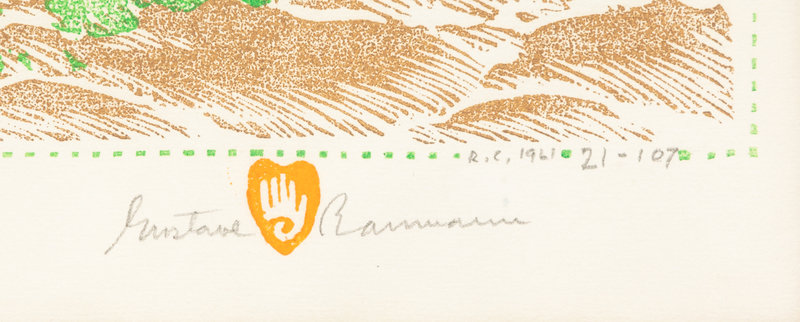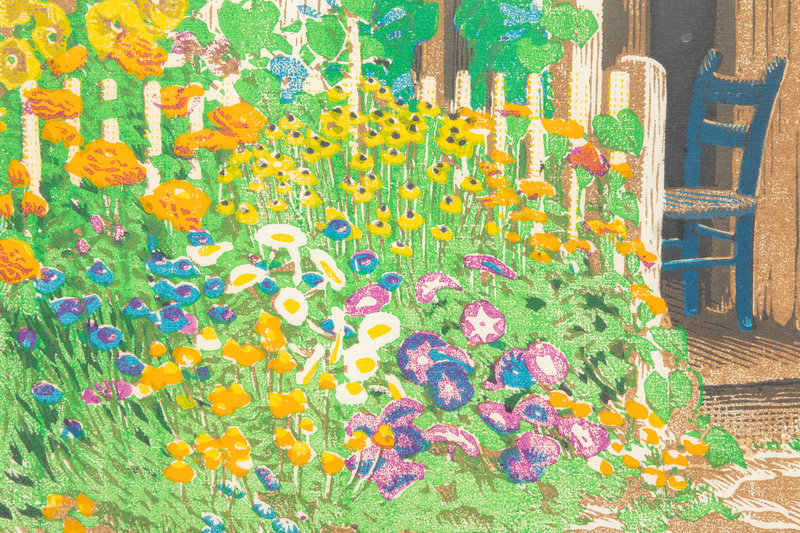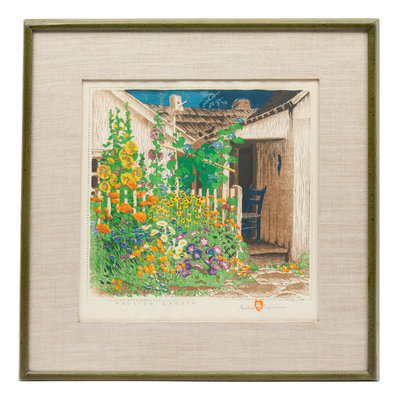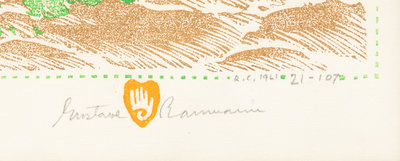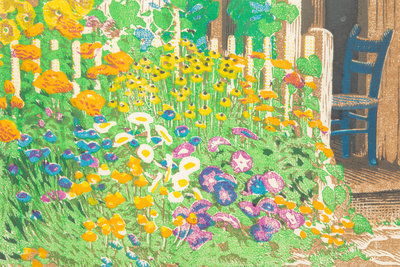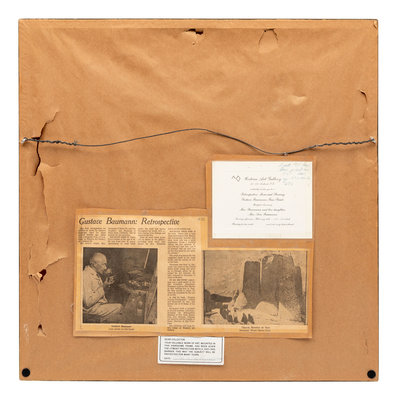Born in Germany, Gustave Baumann learned the art of the color woodcut in Munich, perfected his technique at the Brown County Art Colony in Indiana, and moved to the Southwest in 1918, first to Taos and then to Santa Fe. Baumann brought a modernist sensibility to the Arts and Crafts aesthetics he studied in Indiana, employing a strong, varied palette to textured and layered forms. Baumann also carved marionettes for public ceremonies (including Zozobra, precursor to today’s Burning Man) and figures for churches. Hoosier Garden, hearkening back to his Indiana days, is busy with hollyhocks, black-eyed susans, and veritable a profusion of flowers, set against wood-grained walls, rooftops, and a porch. San Geronimo-Taos, on the other hand, finds Baumann at home in New Mexico, layering lines of figures this time—spectators and dancers—against the levels of Taos Pueblo. Light, shadow, light, shadow—from the scattered observers nearest us, to the shadows of the performers on the the pueblo wall—the people mirror the ancient pueblo itself in a rhythm meant to evoke the Feast Day of San Geronimo, held every year on September 30th.
-James D. Balestrieri
